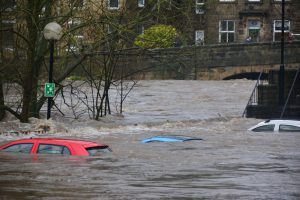It’s the Climate, Stupid
«I’m not going to do it and put our kids’ economic future at risk.»
This is a quote that reverberated around Australia in mid 2019. It was uttered by Prime Minister Scott Morrison, upon being pressed on how serious a stance against climate change he would take if he won the then-upcoming federal election.
It’s a story that sadly plays out worldwide, with many politicians and members of the public opting to prioritise economic growth over the more pressing action required to combat climate change. The emotional twist is usually the same – «climate change is bad, but you still need money».
Which means some people may have been surprised over the past week by the news that the World Economic Forum ranked climate inaction as the number one global mid-term and long-term risk, «with the highest potential to severely damage societies, economies and the planet».
Ranked two and three were extreme weather (an obvious byproduct of climate change) and biodiversity loss. Even in the short-term, extreme weather came in first, outranking COVID-related risks like infectious diseases and mental health deterioration.
This is nothing new...
… to most climate scientists, who have been pleading with anyone who will listen over the past two years that no matter how bad the pandemic has been, the climate crisis will be worse.
It won’t come as news either to the ecologists who have spent the last two years pointing out how rampant deforestation has contributed to the spread of animal-borne diseases, a catastrophic consequence of which is the pandemic itself.
It’s also nothing new to the big economic actors. Climate change first entered the top 5 risks on the WEF’s annual report in 2011, with either climate inaction or extreme weather having topped the list since 2016. Insurance institute Swiss Re warned in 2019 that climate change left unchecked could wipe 18% off the world’s.
The most obvious costs of climate change are the ongoing repair costs to the myriad extreme weather events we’re currently being hit with. The impacts of these events are then amplified by the natural resilience of our planet being chipped away at by constant land clearance.
Increasing frequency in extreme weather events cost continents trillions of dollars
2021’s IPCC Report for Policymakers* highlighted that events which would normally happen once a decade are now likely to start increasing in frequency.
With a rise in temperature of 1.5 degrees (which we will definitely hit), a once a decade extreme heating event will happen every two to three years instead.

A twice a century event will now happen twice a decade. Floods that would have hit once a decade will now hit once every six years. Extreme droughts will double in frequency.
The cost from the catastrophic landslides that hit Europe last year were 10 billion USD. The tangible costs alone from the Australian bushfires has been measured at up to 80 billion USD. Just last week, insurance broker Aon estimated that the total cost for weather-related disasters in 2021 was 329 billion USD, making it the third-costliest year on record.
Increasing frequency in extreme weather events aside, crop losses as a result of invasive species and warming temperatures every year cost continents trillions of dollars.
In 2019, Emma Howard Boyd, Chair of UK’s Environmental Agency, stated that for every one pound spent on protecting communities from the ravages of climate change, around £9 in property damages and wider impacts is avoided.
It’s becoming abundantly clear that as much as certain politicians assure us that we can’t afford to act on climate change, we simply can’t afford not to.
.jpg?)